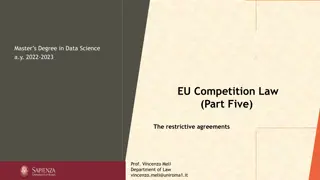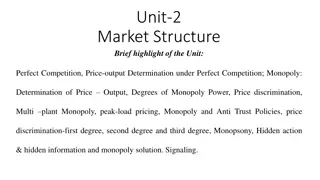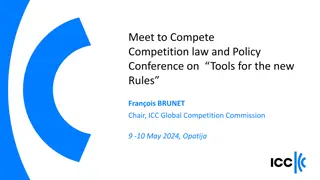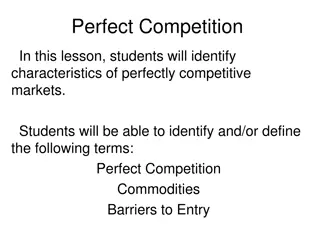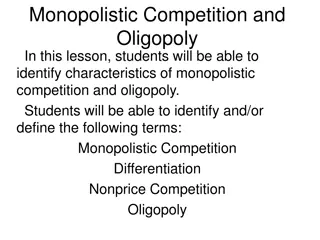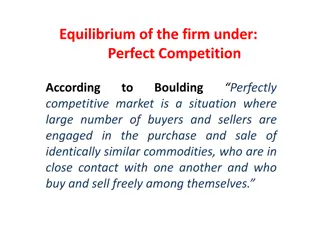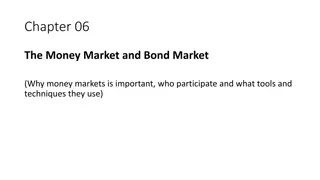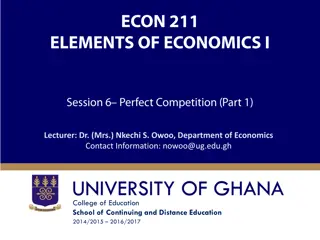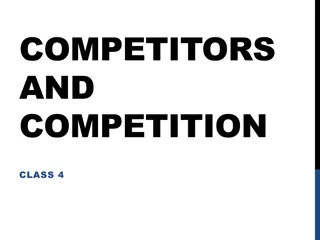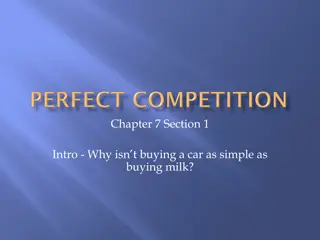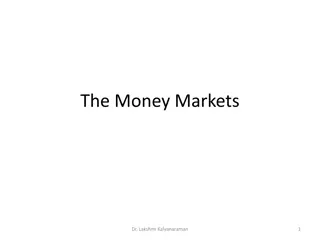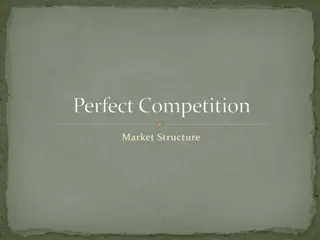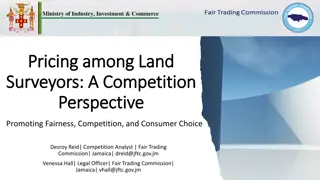Understanding Perfect Competition in Markets
Perfect competition in markets involves a large number of buyers and sellers dealing with identical products, leading to firms being price takers. This form of market structure allows for freedom of entry and exit, perfect knowledge of prices and technology, and homogeneous products. Sellers cannot charge prices higher than the market rate, and new firms can enter or exit the market freely based on profit opportunities.
Download Presentation

Please find below an Image/Link to download the presentation.
The content on the website is provided AS IS for your information and personal use only. It may not be sold, licensed, or shared on other websites without obtaining consent from the author. Download presentation by click this link. If you encounter any issues during the download, it is possible that the publisher has removed the file from their server.
E N D
Presentation Transcript
MARKET A medium by which buyers and sellers come in contact with each other and buy and sell goods and services.
Perfect Competition It is a market in which there are large number of buyers and sellers dealing with homogeneous products.
Large number of buyers and sellers There are large number of buyers and sellers. Implications: Each firm contributes a small quantity of market supply. So, it cannot influence price by changing its supply. So, firm is price taker. A single buyer cannot influence market price by changing his demand.
Homogeneous Products All the sellers sell identical products. There is no product differentiation. Implication: As products are identical, no seller can charge a price which is higher than the market price. There is uniform price in the market.
Freedom of Entry and Exit There is no barrier to entry and exit. New firms can enter in to market and old firms can exit. Implications: The firm earns only normal profit in the long run. If there is abnormal profit, new firms will enter the market. Supply will increase. Price will fall. Revenue will fall and abnormal profit will disappear. If there is loss, some firms will exit. Supply will fall. Price will increase. Revenue will increase. Loss will disappear.
Perfect knowledge of prices and technology Buyers and sellers have perfect knowledge of prices and technology. Implication Buyers and sellers are aware of market price. So, no firm can charge a price which is higher than the market price. Firms are aware of technology. So, all firms will use the best available technology. There will not be any difference in their production cost.
FIRM IS PRICE TAKER In a perfectly competitive market, price is determined by the forces of market demand and supply. AR and MR are equal because the firm can sell any quantity at the market rate. AR curve, MR curve, Price line and demand curve are one and the same and it is parallel to X axis.
In the above diagram, at point E firm is in equilibrium because at the point MC and MR are equal. At the same point AR and AC are also equal. So, firm earns only normal profit
In the above diagram, at point A firm is in equilibrium because at the point MC and MR are equal. At the that point AR is greater than AC. So, firm earns only abnormal profit. New firms will be attracted. This will lead to increase in supply. Fall in price and reduction in revenue. Abnormal profit will disappear in the long run.
In the above diagram, at point E firm is in equilibrium because at the point MC and MR are equal. At the that point AR is less than AC. So, firm incurs loss. Some firms will exit. This will lead to decrease in supply. Rise in price and revenue. Loss will disappear in the long run.



